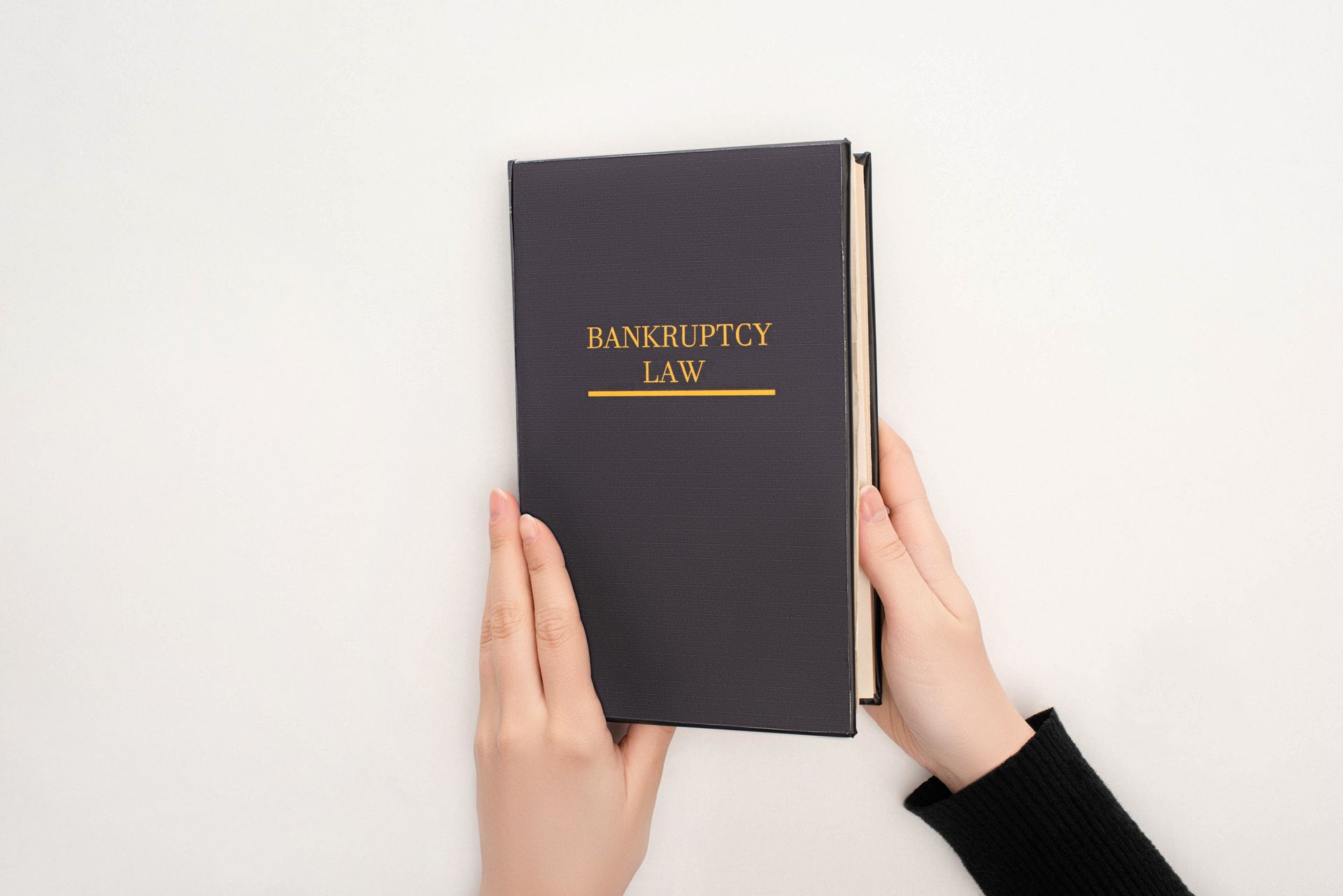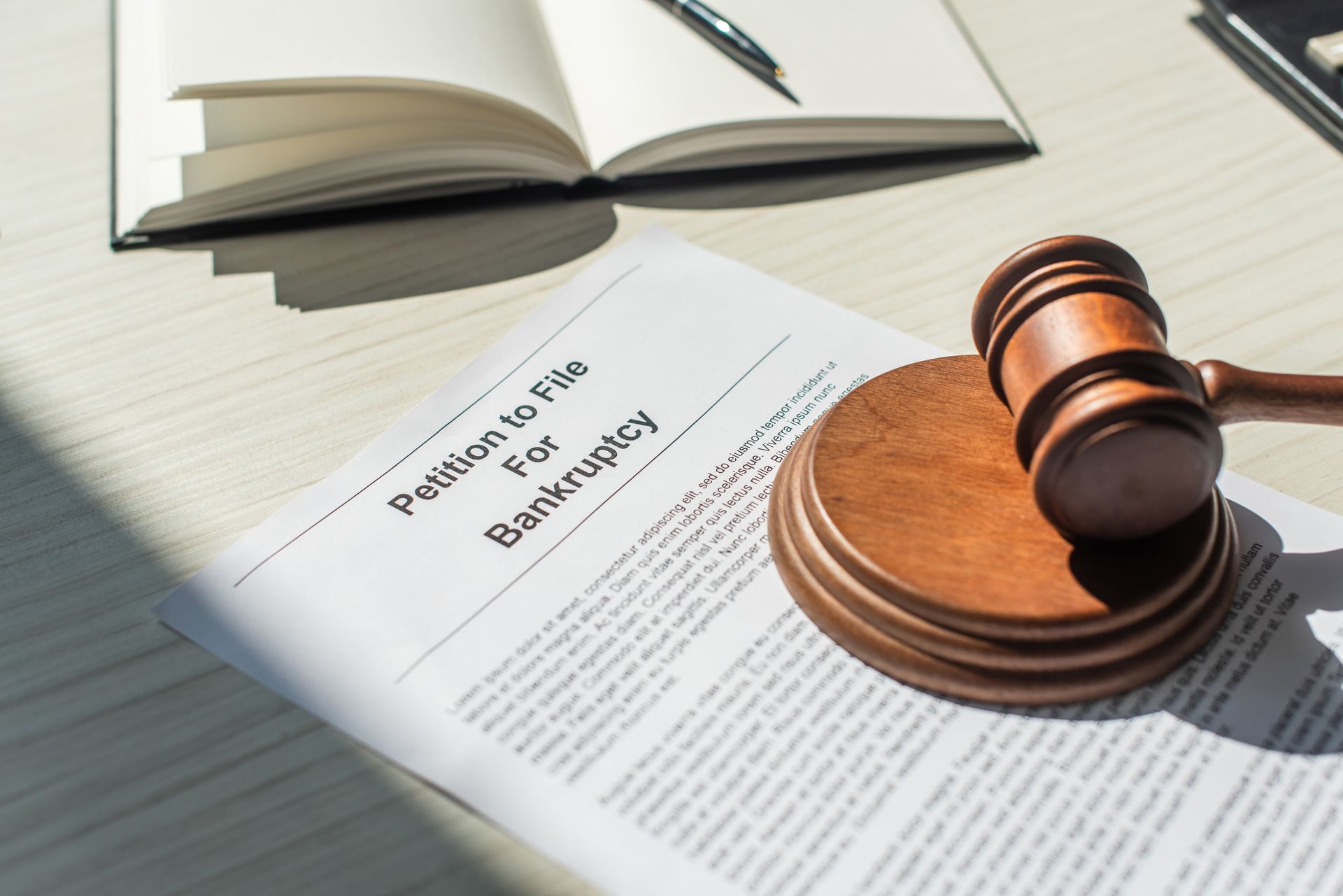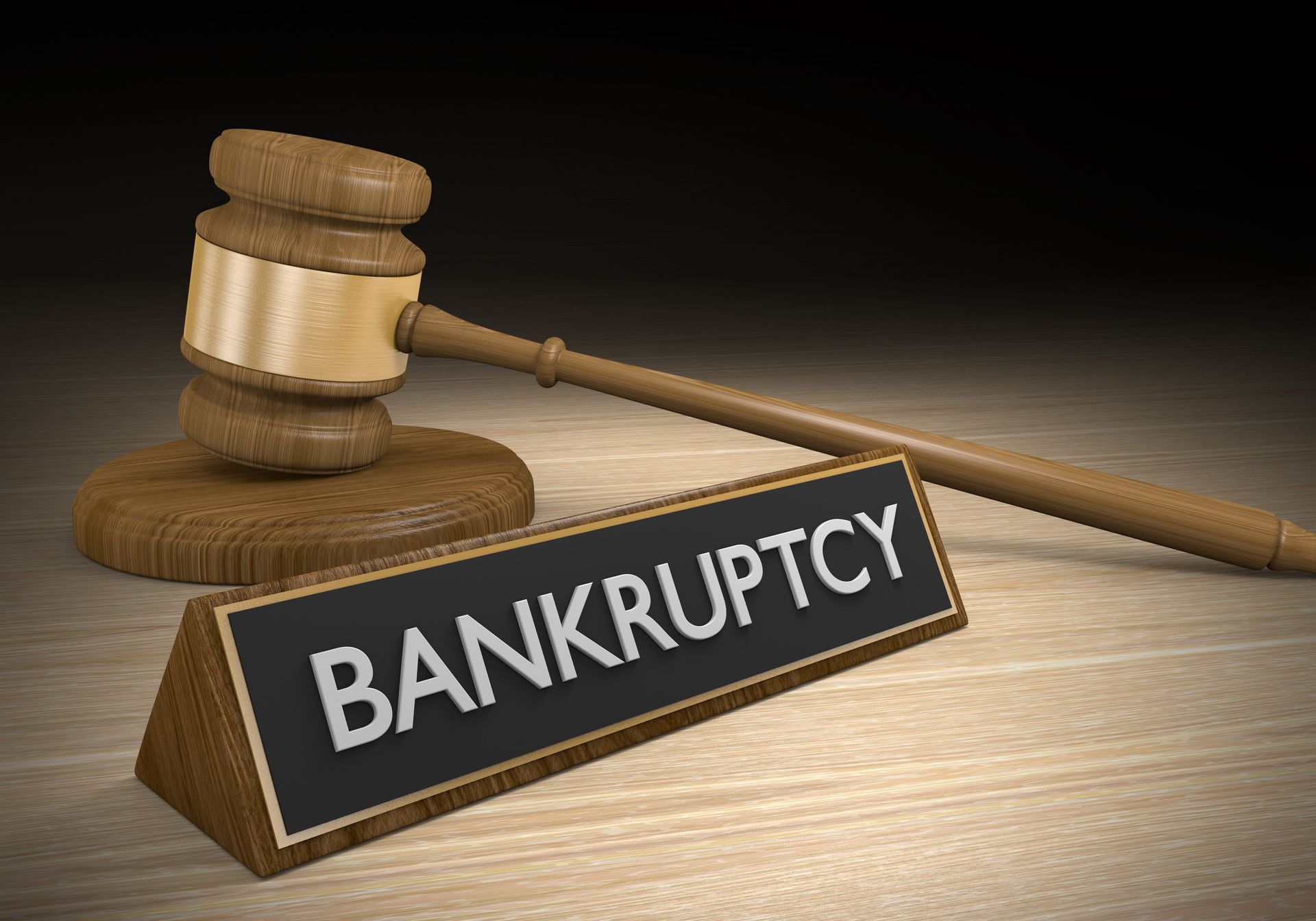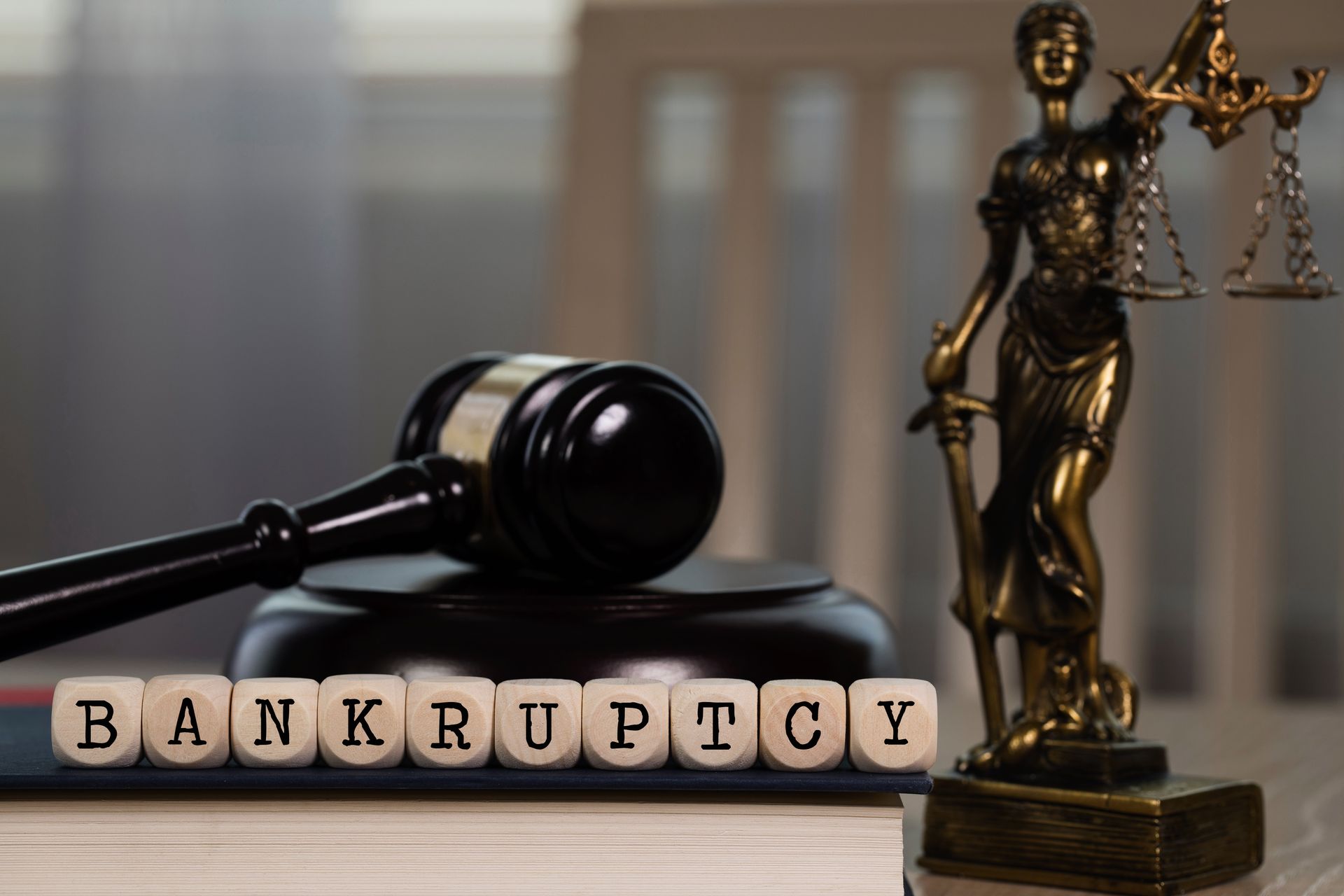Contact Us
Phone: 423-205-7744
Location
4416 Brainerd Rd.
Chattanooga, TN 37411
Hours
- Mon - Fri
- -
- Sat - Sun
- Closed
Call Now 24/7 Free Consultation: 423-205-7744
Understanding Bankruptcy: A Glossary of Common Bankruptcy Terms
When you’re faced with a financial crisis, you’re under an extreme amount of stress. One of the main benefits of turning to the protections of bankruptcy is alleviating this extreme stress. However, many bankruptcy petitioners find themselves regularly lost and confused about what’s going on or what documents mean because they simply aren’t familiar with bankruptcy terminology. If you are filing bankruptcy or considering filing bankruptcy, minimize the possible confusion by familiarizing yourself with common bankruptcy terms.
Glossary of Common Consumer Bankruptcy Terms:
341 Meeting (or the Meeting of the Creditors): A meeting at which the debtor is questioned under oath by the trustee, examiner, or the US trustee about financial affairs. Creditors are invited to attend the meeting and ask the petitioner questions, but most do not attend.
Assume: An agreement to continue performing duties under a lease or contract.
Automatic Stay: An injunction that automatically stops collection activity against the petitioner like lawsuits, foreclosure, garnishments, etc. the automatic stay goes into effect as soon as a bankruptcy petition is filed.
Bankruptcy: A legal procedure for dealing with debt problems through a case filed under one of the chapters of title 11 of the United States Code (the Bankruptcy Code).
Bankruptcy Code: A common reference to federal bankruptcy law in title 11 of the United States Code (11 U.S.C. § 101-1330).
Bankruptcy Court: A unit of the district court with bankruptcy judges in regular active service.
Bankruptcy Estate: All legal or equitable interests belonging to the petitioner in property, both real and personal, at the date and time of the bankruptcy filing.
Bankruptcy Judge: A judicial officer of the United States Bankruptcy Court that has the decision-making power over federal bankruptcy cases.
Bankruptcy Petition: The formal request filed with the bankruptcy court seeking protection through the federal bankruptcy laws.
Bankruptcy Trustee: The individual or corporation appointed in a bankruptcy case to represent the interests of the bankruptcy estate and the petitioner’s creditors.
Chapter 7: A type of bankruptcy that provides “liquidation” including the sale of nonexempt property belonging to the bankruptcy estate with the proceeds distributed to the petitioner’s creditors.
Chapter 7 Trustee: The individual appointed in a chapter 7 bankruptcy case to represent the interests of the bankruptcy estate and the petitioner’s unsecured creditors. (The Chapter 7 bankruptcy trustee is responsible for reviewing the debtor’s petition and schedules, liquidating any property of the estate, and making distributions to creditors when proceeds are available. The Chapter 7 bankruptcy trustee may also bring actions against creditors or the petitioner to recover property of the bankruptcy estate.)
Chapter 13: A type of bankruptcy that provides adjustment of debts for an individual who has regular income. (In a Chapter 13 bankruptcy, debtors keep property and pay debts over time using a bankruptcy court approved payment plan that usually lasts from three to five years.)
Chapter 13 Trustee: The individual appointed to administer a chapter 13 bankruptcy case. (In addition to the responsibilities of a chapter 7 trustee, a chapter 13 trustee is also responsible for overseeing the debtor’s payment plan, receiving the monthly payments from the petitioner, and disbursing plan payments to the petitioner’s creditors.)
Claim: A creditor’s assertion of a right to receive payment from a debtor or from the bankruptcy estate.
Confirmation: The bankruptcy judge’s approval of a plan of reorganization in a Chapter 13 bankruptcy.
Consumer Bankruptcy: A bankruptcy case filed by a debtor who has mostly consumer debt.
Consumer Debt: Debts incurred for personal reasons (as opposed to business reasons).
Creditor: A person or business to which the petitioner owes money.
Credit Counseling: Usually a nonprofit budget and credit counseling agency offering individual or group counseling required for consumer bankruptcy petitioners prior to filing.
Current Monthly Income: The average monthly income the debtor receives over six calendar months prior to filing a bankruptcy case, including regular contributions to household expenses from non debtors and any income from the petitioner’s spouse if the bankruptcy petition is a joint petition, but not including SSI or payments received because the petitioner is the victim of certain crimes.
Debtor: A person who files a petition for relief under federal bankruptcy law.
Debtor Education: The required “instructional course” on personal financial management a debtor is required to complete before receiving a chapter 7 or chapter 13 bankruptcy discharge.
Discharge: A release from personal liability releasing a debtor from personal liability for certain debts known as dischargeable debts and preventing creditors owed the debts from taking any action against the debtor or the debtor’s property to collect on “discharged” debts.
Dischargeable Debt: Any debt for which the court can legally eliminate the debtor’s personal liability.
Equity: The value remaining in a petitioner’s property after liens and other creditors’ interests are considered.
Executory Contract or Lease: Usually references a contract or lease under which both parties involved agree to certain duties that remain to be performed. (If a contract or lease is executory, the petitioner may assume the lease or contract or reject it.)
Exempt: When a property belonging to the debtor is protected from creditors; exempt property cannot be sold by the bankruptcy trustee in order to pay creditors.
Exempt Property: Property or specified value in a property that is exempt from sale by the bankruptcy trustee. The debtor is allowed to retain exempt property, free from the claims of creditors who do not have liens.
Exemption: Property federal Bankruptcy Code or applicable state law allows a petitioner to keep without fear it will be sold in order to distribute the proceeds to pay creditors.
Fraudulent Transfer: Any transfer of a petitioner’s property made with intentions to defraud the bankruptcy court or for which the debtor receives less than the transferred property’s accurate value.
Insider (of individual debtor): A reference to any relative of the debtor, or a debtor’s general partner, partnership in which the debtor is a general partner, a general partner of a debtor, or a corporation for which the debtor is an officer or director or other person in control.
Joint Petition: One bankruptcy petition filed by a husband and wife jointly.
Lien: A charge upon specific property designed to secure payment of a debt.
Liquidation: The sale of a petitioner’s nonexempt property with the proceeds distributor amongst creditors to pay towards the petitioner’s debt.
Means Test: A standard calculation used to determine if a bankruptcy petitioner is eligible to file chapter 7 bankruptcy.
Motion To Lift Automatic Stay: A request filed by a creditor to allow them to take action against a bankruptcy petitioner or their property that is prohibited by the bankruptcy’s automatic stay.
No-Asset Case: A chapter 7 bankruptcy case with no associated assets available to satisfy any portion of the unsecured claims associated with the case.
Nondischargeable Debt: Any debt that cannot be eliminated in a bankruptcy discharge.
Objection to Discharge: An objection (on the part of the trustee or a creditor) to the debtor receiving a release from personal liability pertaining to certain discharged debts.
Objection to Exemptions: An objection (on the part of the trustee or a creditor) to a debtor’s claim that certain property is exempt.
Plaintiff: Any person or entity that files a formal complaint with the court.
Plan: In relation to a chapter 13 bankruptcy, a debtor’s detailed description of how they plan to pay creditors’ claims over a fixed period of time (typically 3 or 5 years).
Preferential Debt Payment: Any debt payment made to a creditor during the 90-day period prior to the bankruptcy filing (or within one year if the creditor was an insider) that totals more than the creditor would receive through the chapter 7 bankruptcy case.
Priority: If there is not enough money available in the bankruptcy estate to pay all unsecured claims, priority refers to the Bankruptcy Code’s statutory ranking of unsecured claims defining the order in which they are paid.
Priority Claim: Any unsecured claim entitled to payment ahead of other unsecured claims that are not entitled to priority status.
Proof of Claim: A written statement (official form required) including the reason a debtor owes a creditor money.
Property Of The Estate: All legal or equitable interests in property belonging to the debtor as of the commencement of the bankruptcy case.
Reaffirmation Agreement: An agreement by a chapter 7 debtor to continue paying a debt after the bankruptcy that would otherwise be included in the discharge of debt. The reaffirmation agreement is usually a means of retaining property that would otherwise be surrendered during the course of bankruptcy.
Schedules: A list submitted by the debtor along with the petition (or immediately following the petition) detailing all the debtor’s assets, liabilities, and financial info. (There are official forms debtor’s are required to use.)
Secured Creditor: An individual or business holding a claim against the debtor that is secured by a lien on property of the estate.
Secured Debt: Any debt backed by a mortgage, pledge of collateral, or other lien; debt for which the creditor has the right to pursue specific property upon default.
Statement of Financial Affairs: A series of questions debtors must answer in writing regarding different sources of income, transfers of property, creditor lawsuits, etc. (There is an official form required).
Statement of Intention: A declaration made by chapter 7 debtors regarding their plans to deal with consumer debts secured by property of the bankruptcy estate.
Substantial Abuse: A consumer bankruptcy case in which the court determines that granting relief under bankruptcy law would be an abuse of chapter 7 because, for instance, the debtor is able to pay their debt.
Undersecured Claim: Any secured debt that is secured by property valued at less than the amount of the debt.
United States Trustee: A Justice Department Officer that supervises the administration of bankruptcy cases, estates, and trustees by monitoring plans and disclosure statements, monitoring creditors’ committees, monitoring fee application, and performing other statutory duties.
Unliquidated Claim: Any claim that has no specific value determined.
Unscheduled Debt: A debt that should have been included in the debtor’s schedule filed with the court, but was not included.
Unsecured Claim: Any claim or debt that is not secured by property; credit was extended based solely on a creditor’s assessment of the debtor’s future ability to repay the debt.
If you are filing bankruptcy and you have questions about bankruptcy and the bankruptcy process , please don’t hesitate to contact Ken Rannick. Most bankruptcy offices in the Chattanooga area don’t have a single Consumer Bankruptcy Specialist on staff. Our office is the only one with two. You are in good hands with Kenneth C. Rannick P.C.
The post Understanding Bankruptcy: A Glossary of Common Bankruptcy Terms appeared first on Kenneth C. Rannick, P.C..




Schedule a Case Evaluation
Contact us now!
Homepage FCE Form
We will get back to you as soon as possible.
Please try again later.
By submitting this form, you agree to be contacted by our law firm, either by phone, text or by email.
Hours
- Mon - Fri
- -
- Sat - Sun
- Closed
Flexible Appointment Scheduling
24/7 Phone Availability
*$0 down to get your Chapter 7 case started applies to clients who choose to file a Chapter 7 bankruptcy with the U.S. Bankruptcy Court through Kenneth C. Rannick, P.C. We will open a Chapter 7 file for a client with as little as $0 down, however, our office will not file a client's Chapter 7 without an affordable down payment on attorney fees.
*$0 down to get your Chapter 13 case started applies to clients who choose to file a Chapter 13 bankruptcy with the U.S. Bankruptcy Court through Kenneth C. Rannick, P.C. Our law office will file a Chapter 13 without requiring any costs or attorney fees paid upfront for qualified clients who 1) have not had a prior chapter 13 dismissed within the past year, and 2) are not trying to stop a foreclosure within 20 days of filling bankruptcy.We are a debt relief agency.
We help people file for bankruptcy relief under the Bankruptcy Code.
The information on this website is for general information purposes only. Nothing on this site should be taken as legal advice for any individual case or situation. This information is not intended to create, and receipt or viewing does not constitute an attorney-client relationship.
© Copyright 2023 | All Rights Reserved | Kenneth C. Rannick, P.C. | Powered By Convert It Marketing | Privacy Policy






